Check Out This Guide:
GHOST KITCHEN COMPARISON TOOL: CHOOSE THE RIGHT PROVIDER FOR YOUR VIRTUAL RESTAURANT
ghost kitchens
SEP 24, 2021
Share
According to research done by CBRE, About 111 million people in the U.S. used an online ordering app for food in 2020—a 17% increase from 2019. Online food ordering app revenue is expected to increase 62% by 2025. That’s a big chunk of the market, and a good opportunity for business owners to put a magnifying glass on their ordering and delivery experience.
Imagine if ordering, delivering, and marketing was all you had to worry about. That’s the case for the 1,500+ ghost kitchen operators across the US.
Ghost kitchens have been around in varying forms for years and share some DNA with the commissary kitchens that have aided caterers and bakeries for decades. Essentially, they are restaurant kitchens entirely detached from restaurants.
In ghost kitchens, there’s no host stand, no seating, no customer-facing space. Just a kitchen, some tablets for orders, and a pick-up window for delivery drivers.
Ghost kitchens take on many different operating models.
Sometimes, there are multiple kitchen units within one warehouse or industrial building.
Sometimes they’re in a shipping container or trailers. From the outside, you would have no idea that there were kitchens inside of them.
And sometimes, a ghost kitchen operates out of an existing restaurant’s kitchen.
Ghost restaurants are built for delivery only. In a dining landscape where delivery is king, especially coming out of the global pandemic where restaurants rely on delivery to survive, ghost kitchens have boomed over the past year. So let’s dig in: what is a ghost kitchen, and what’s next for them?
Delivery is the fastest-growing segment of the restaurant industry—outpacing dine-in by 300% since 2016. It’s a $35 billion industry, with the potential to grow to $1 trillion by 2030.
More than half of all Americans order delivery at least once a week—a third twice a week. And this was all in motion before the COVID-19 pandemic. During the pandemic, it was the only way for many to eat food from a restaurant, and the only way restaurants could survive.
The tracks were laid before, but COVID-19’s devastating impact on the restaurant business has us looking full-steam ahead towards the future of dining: ghost kitchens and virtual restaurants.
These changes to the traditional model have predated COVID-19, but the pandemic’s impact on the industry has made one thing clear: delivery is not only here to stay, it’s growing.
Separating the kitchen from the restaurant has created an infrastructure ripe for innovation and experimentation, and one that people are placing big bets on:
Former Uber CEO Travis Kalanick has invested hundreds of millions of dollars into CloudKitchens, which is building facilities in the U.S, U.K., and India.
Kitchen United and Zuul Kitchens are creating virtual food halls in cities like New York and Chicago, where diners can order from multiple local favorites at once.
Companies like Miami-based Reef Kitchens are taking it modular, building kitchens in shipping containers that can find homes in parking lots.
Traditional quick-serve restaurants are taking note too, using ghost kitchens to expand their well-known brands. Chick-fil-A and Wendy’s are experimenting with virtual locations in cities across the country, using 1st party services like Lunchbox or 3rd party services like Doordash, Uber Eats, and GrubHub for food delivery.
Restaurants known for fine dining are making the pivot, too. SBE — known for its restaurants with chefs like Jose Andres, Wolfgang Puck, and Masaharu Morimoto — is now in the virtual restaurant game. The hospitality stalwart has launched hundreds of locations of delivery-only concepts like Umami Burger, Sam’s Crispy Chicken, and Krispy Rice.
Celebrities like Rachael Ray and Wiz Khalifa got in on the delivery game in early days, with Rachael Ray to Go and HotBox launching in the second half in 2019. Since then, dozens of celebrities have launched ghost kitchens to create national virtual chains seemingly overnight.
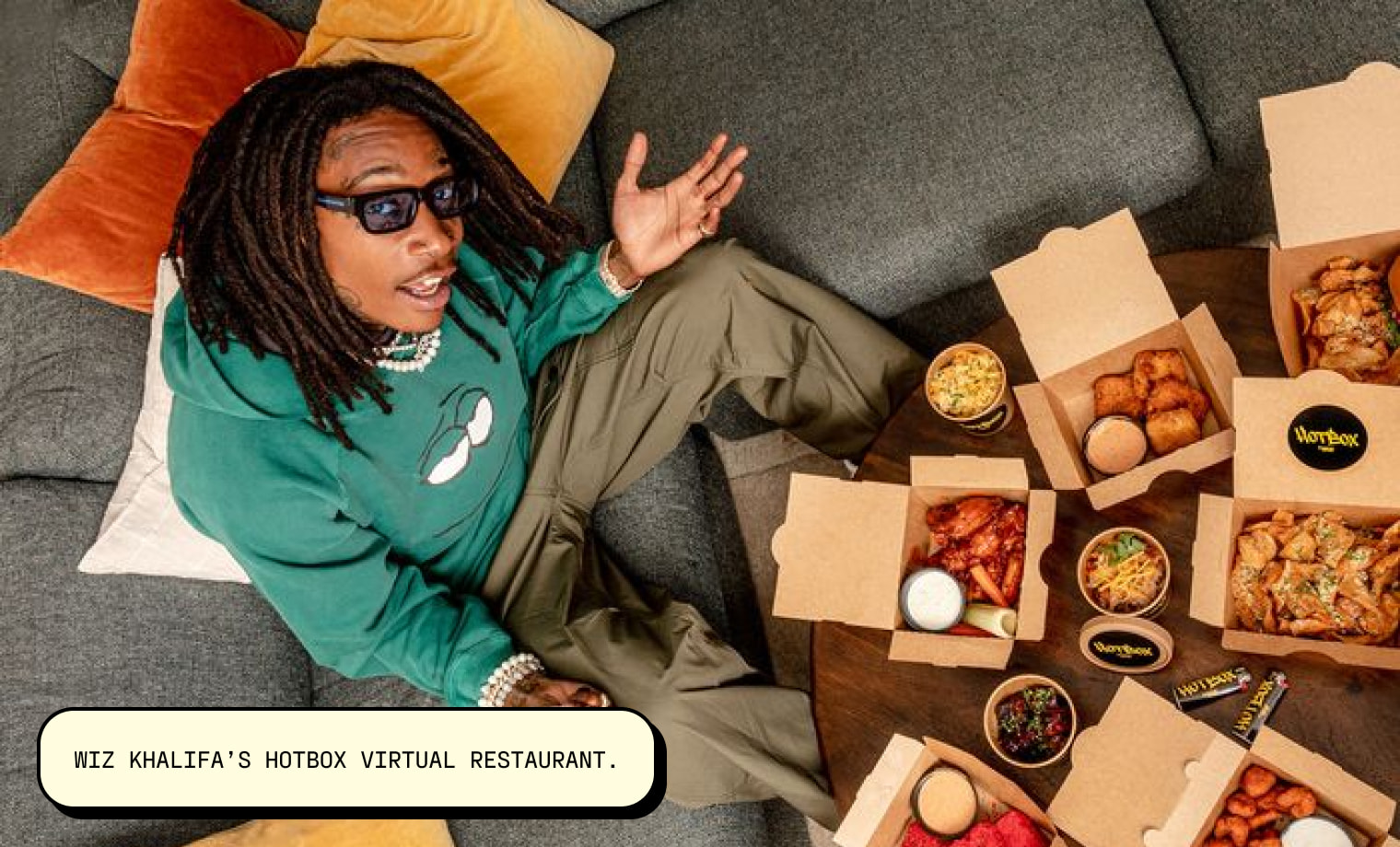
Virtual restaurants can also take a different form as an extension of an existing restaurant. Bloomin’ Brands has found success with this model, adding the virtual fried chicken concept Tender Shack to their portfolio. When a diner orders, it’s cooked and sent from existing locations of Carrabba’s Italian Grill.
These restaurants of the future are taking advantage of the significantly reduced costs of operating to expand into new markets and launch brand new concepts.
There are thousands of virtual restaurants in the US, with the majority of them hosted by these top ghost kitchen providers.
C3 by SBE is a ghost kitchen incubator powering well-known brands like Krispy Rice, Umami Burger and Sam's Crispy Chicken. C3 stands for “Creating Culinary Communities”.
In April 2021, C3 launched the CITIZENS GO app, designed as an alternative to third-party delivery platforms. Partnering with Lunchbox, the app let shoppers order from more than 200 ghost kitchens and brick-and-mortar restaurants in one place for the first time ever.
C3 has big plans to go global and expand to an additional 150 brands by the end of 2021 through a partnership with Kitobi, a cloud kitchen platform.
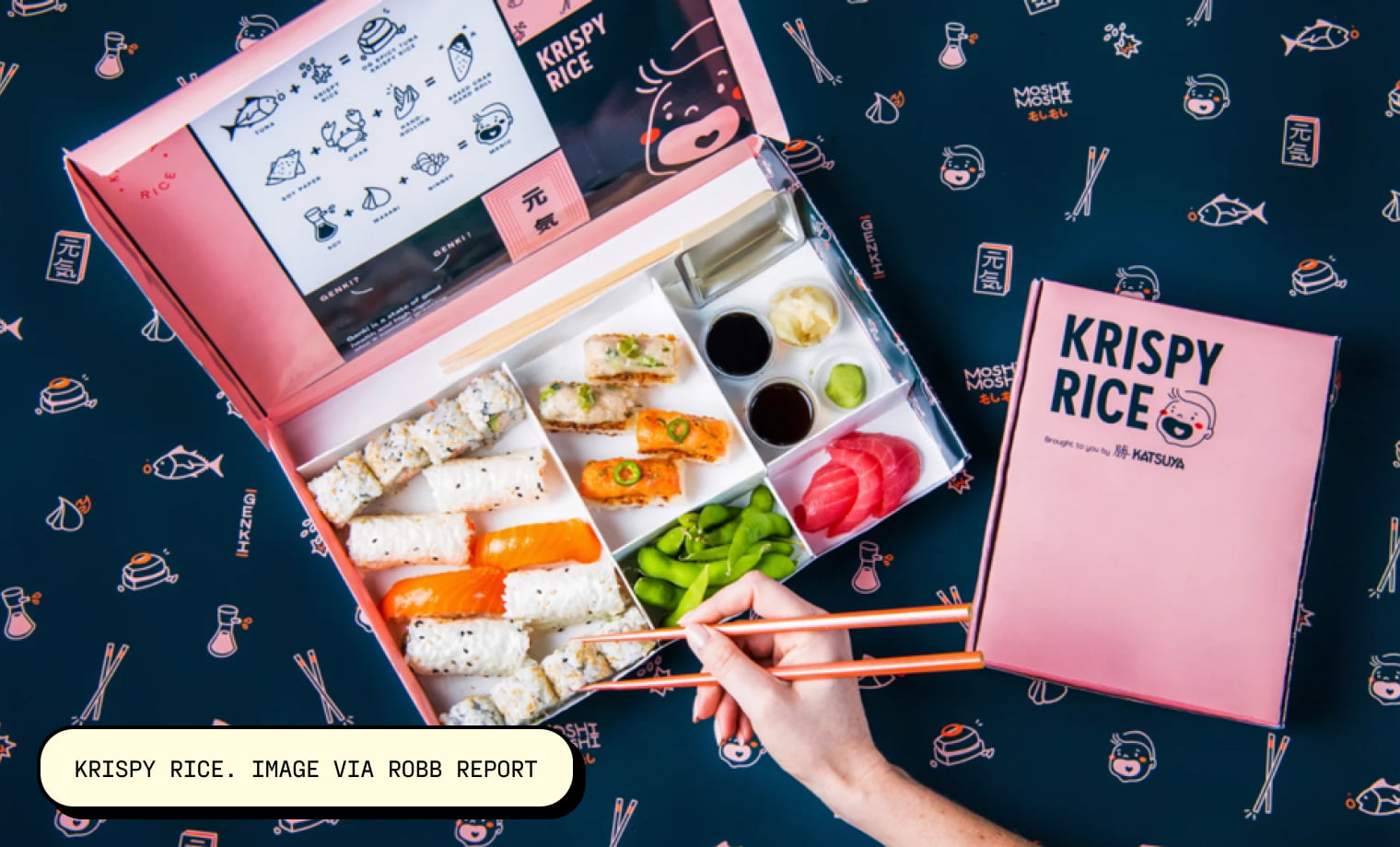
Launched by Uber co-founder and former CEO Travis Kalanick, CloudKitchens is an international network of ghost kitchens with over 40 locations. CloudKitchens operates in a turnkey way, marketing that restaurants can open a ghost kitchen in just one month.
CloudKitchens renovates existing buildings to add commercial kitchens, and then leases spaces in those kitchens to restaurants who then use the space to sell via delivery apps.
With six locations across the United States in cities like Scottsdale, Austin, and Chicago, Kitchen United is known for their ‘multi-restaurant ordering’ — the ability to deliver foods from multiple restaurants in one delivery order (like the CITIZENS GO app from C3).
Each of their kitchen centers (locations) hosts 10+ different virtual kitchens, most of which are single-location restaurants, but there are some national brand offerings too (like White Castle).
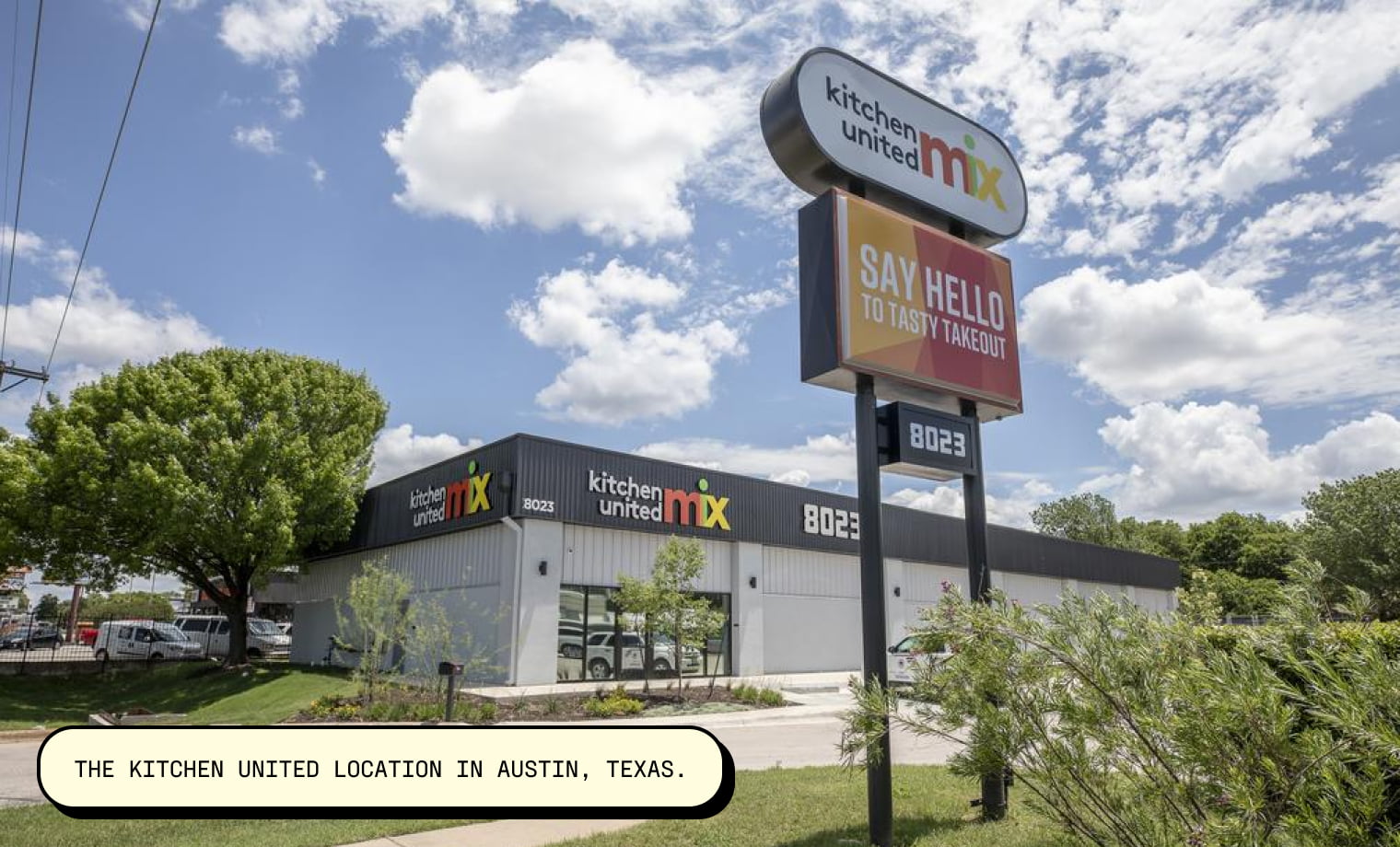
REEF’s Neighborhood Kitchens take over existing real estate (in a reported 4,500 different locations) to build out ghost kitchen operations.
REEF’s NBRHD Restaurant Development Program is a $1.25 million development program to help local restaurants scale their delivery business. It piloted in Vancouver earlier this year, with other cities rumored to be opening up soon. In the Development Program, REEF works hand-in-hand with selected restaurant brands to create menus, train culinary staff, and create marketing campaigns.
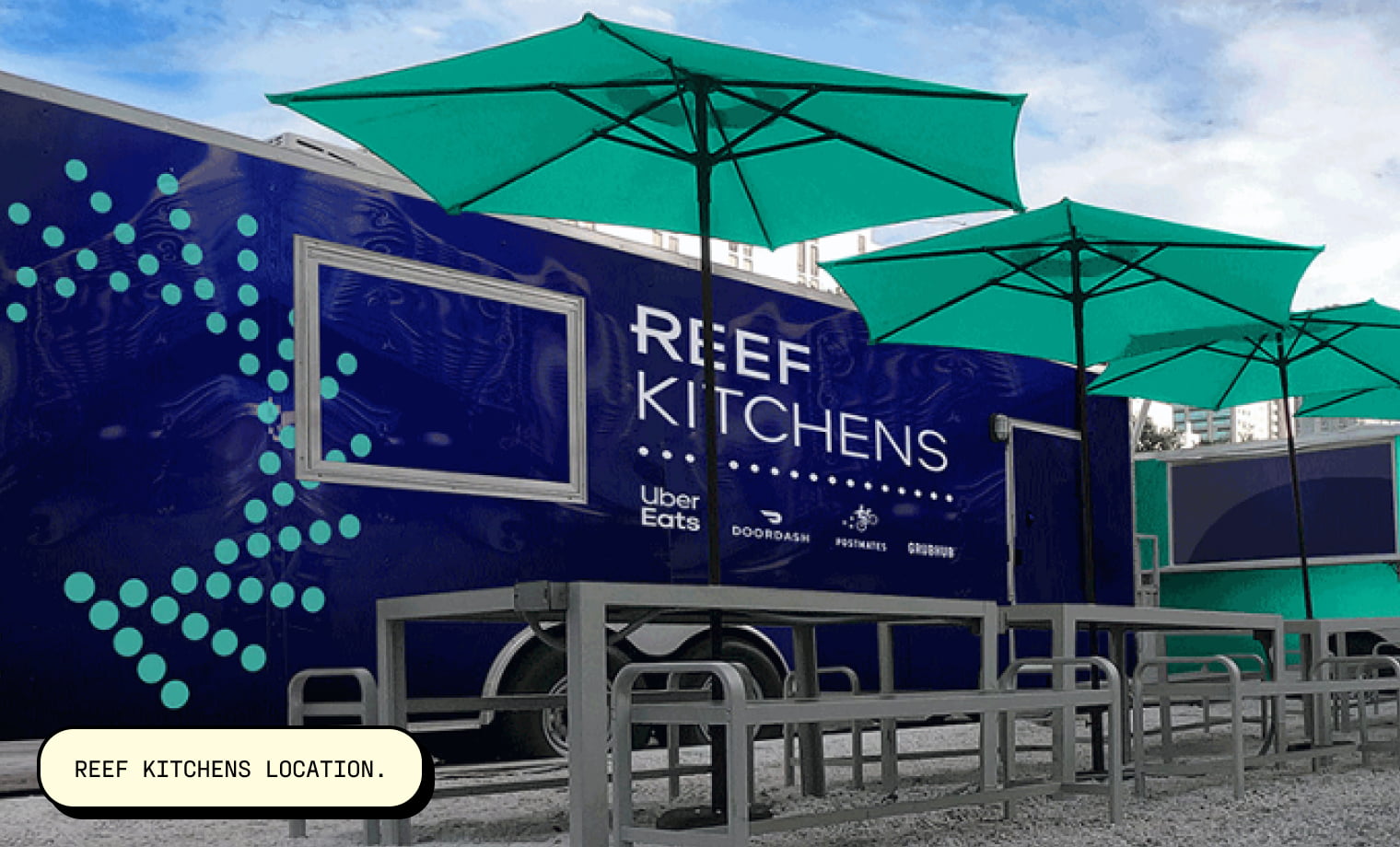
More of a technology platform than a ghost kitchen operator, Zuul works with ghost kitchens, restauranteurs, food halls, hospitality groups, virtual brands, and catering companies to simplify delivery operations. The Zuul Market in NYC features food from 8 local restaurants.
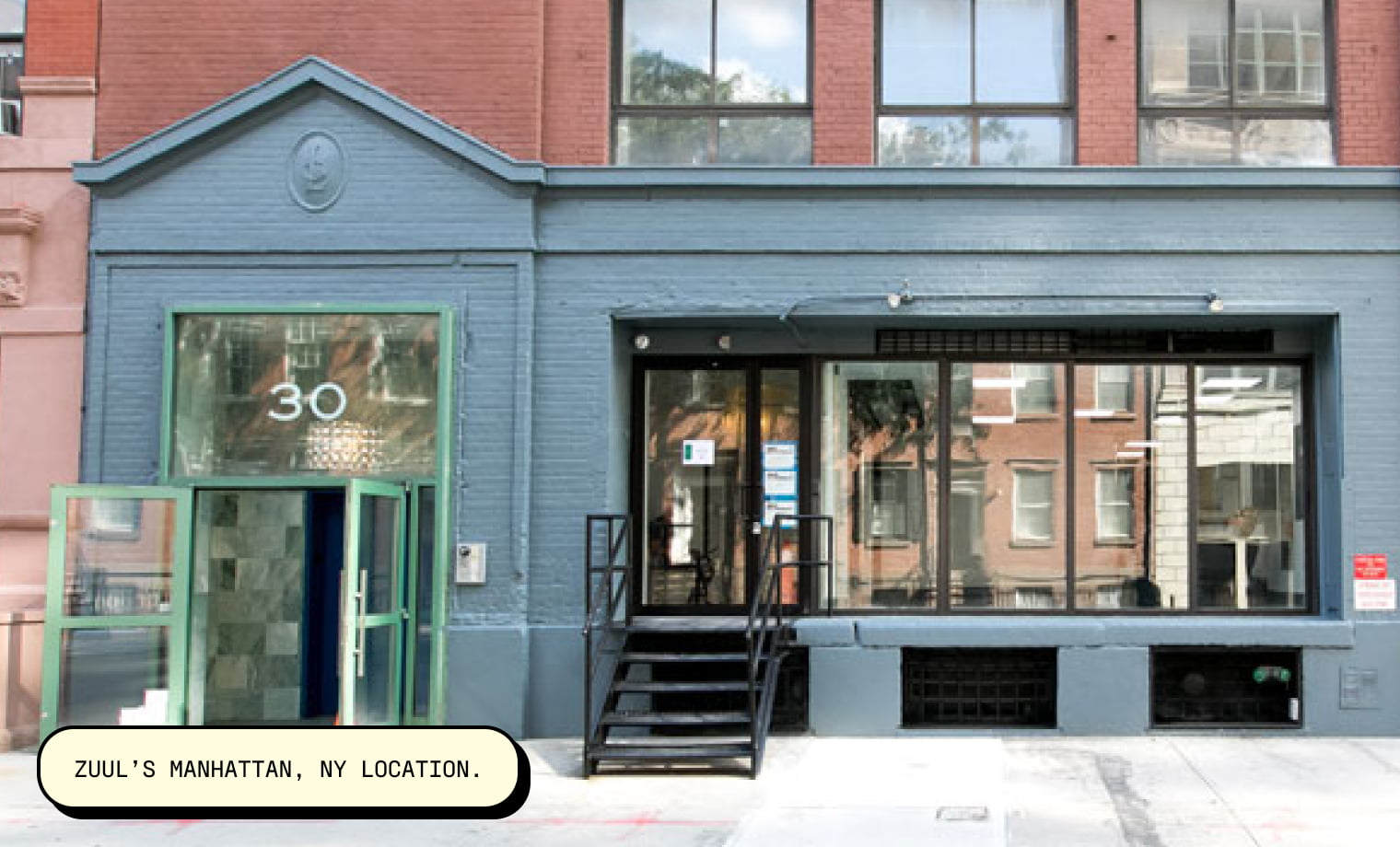
With 60+ locations in 5 countries, Kitopi was one of the first ghost kitchen providers to go global. Over 200 restaurants use Kitopi to handle the production and delivery of their food. Restaurants can get launched in one of Kitopi’s ‘smart kitchens’ in just 14 days.

The terms ‘virtual restaurant’, ‘ghost kitchen’, and ‘cloud kitchen’ are thrown around daily by news, press, restaurants, and the industry at large. So what’s the difference?
Simply put: A virtual restaurant is a restaurant that runs out of a ghost kitchen. A cloud kitchen is the same thing as a ghost kitchen.
To break it down a bit more:
A virtual restaurant is a restaurant that runs out of a ghost or cloud kitchen. The only way to order from a virtual restaurant is via an app or third-party delivery platform. All virtual restaurants offer pick-up, and some offer dine-in. Virtual restaurants are restaurants of the digital age—they exist solely on our devices via apps and delivery services. Some virtual restaurants last for a limited time — sometimes coinciding with an event, a product launch, or a concert — but most virtual restaurants are permanent.
A ghost kitchen is a commercial kitchen that offers food from different restaurants. Some ghost kitchens have just one restaurant, with others having hundreds. It depends on the size.
A cloud kitchen is the same concept as a ghost kitchen. Some cloud kitchens handle more fulfillment and logistics for restaurants, but essentially ‘cloud kitchen’ and ‘ghost kitchen’ are different marketing terms used to describe the same thing. Sometimes they’re called dark kitchens, too.
3 years ago, there were no virtual restaurants. Now, there are thousands across the globe. Since virtual restaurants have a quicker start-up time and far fewer operational complexities compared to brick-and-mortar restaurants and franchises, it is easier for everyday entrepreneurs to start their own restaurant.
Here are a few of the most well-known virtual restaurants.
The virtual restaurant that started it all — MrBeast Burger launched in November 2020 and is now in over 900 locations in the USA and Europe. Robert Earl’s Virtual Dining Concepts launched MrBeast Burger, and they’re responsible for multiple other celebrity-backed virtual kitchens like Tyga’s Bites and Mariah’s Cookies.
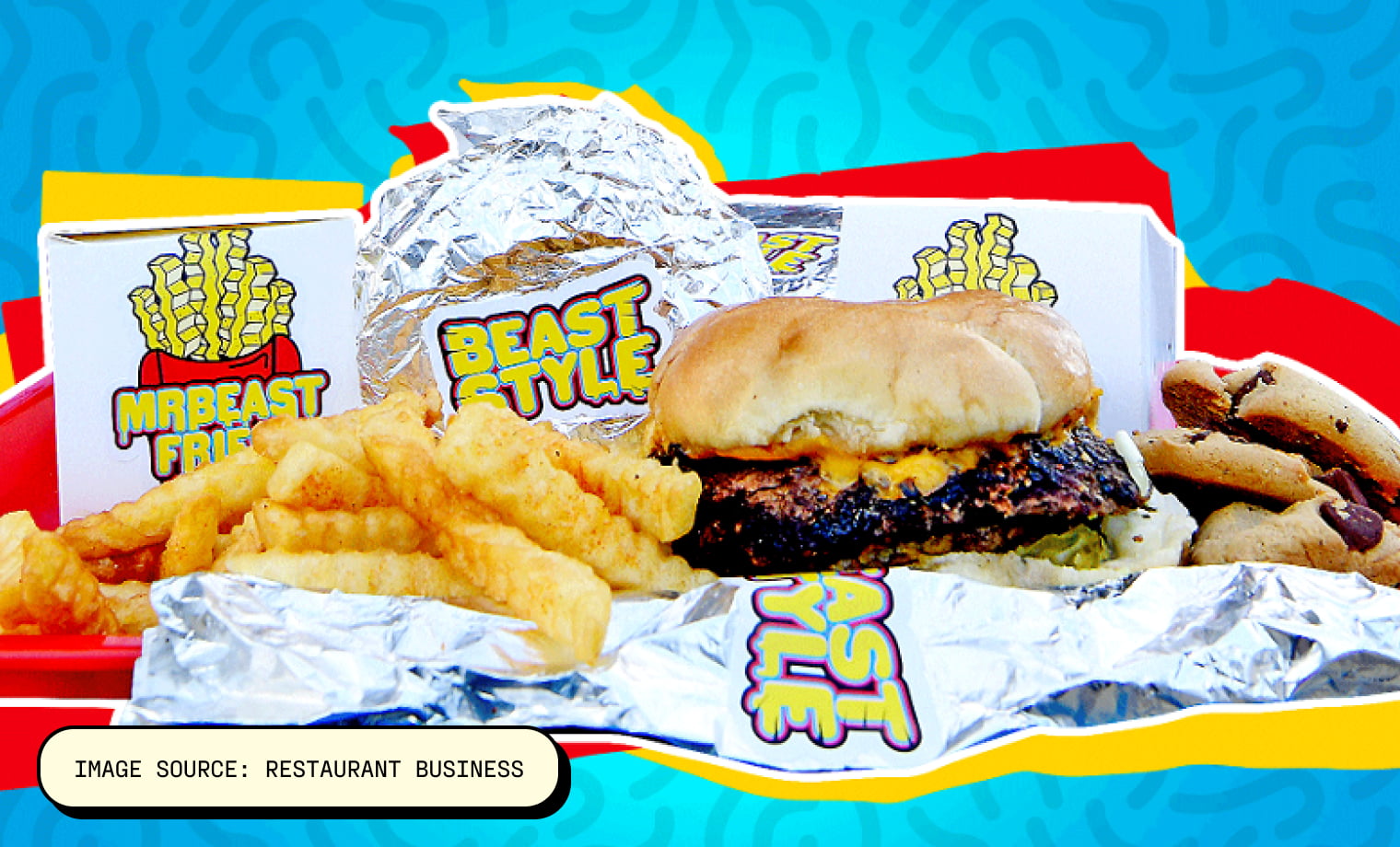
Another excellent example of a ghost kitchen is NASCAR Refuel, which premiered at the Coke Zero Sugar 400 in Daytona, Florida in August 2021. With fan-favorites like the Daytona Dog, NASCAR Refuel is the go-to virtual restaurant for fans who miss the raceday experience (or anyone who loves delicious stadium food).
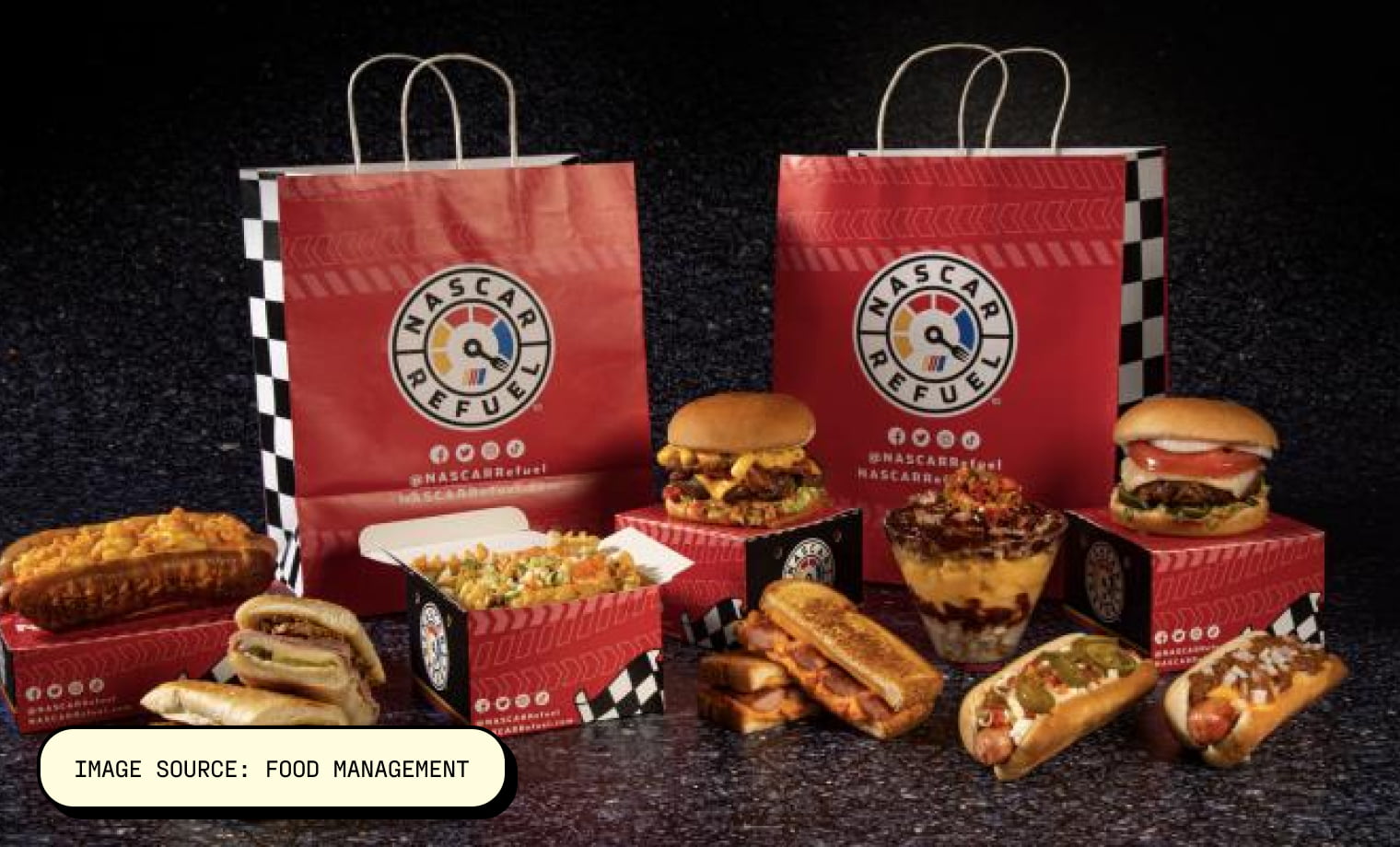
Krispy Rice is delicious sushi and rice dishes served up from C3 and SBE in US locations from coast to coast. We might see Krispy Sushi and other C3 restaurant foods served up in TGI Fridays, Hooters, and PF Changs soon due to an August 2021 announcement that TriArtisan Capital private equity investment firm invested $10 million into C3.
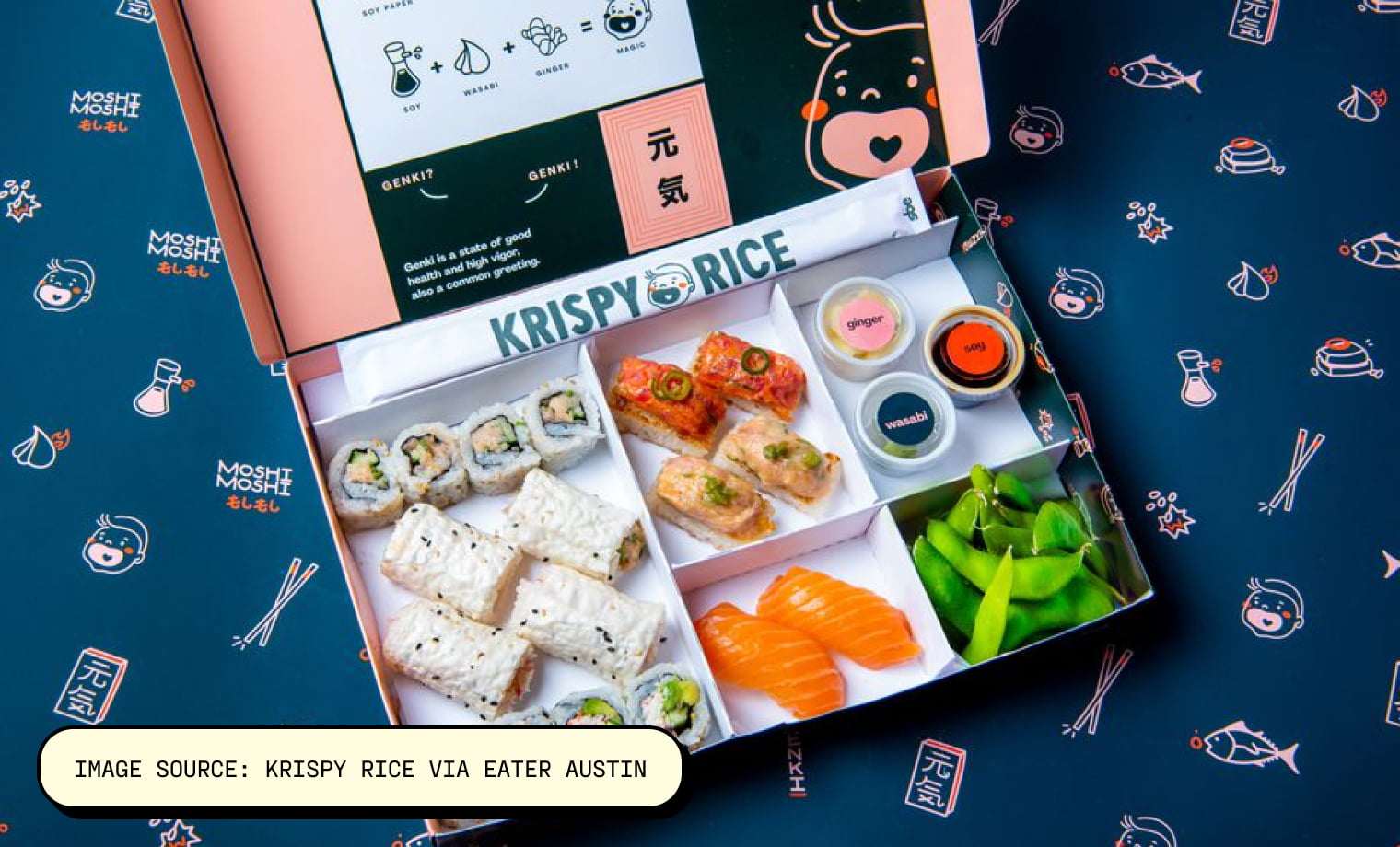
Sam’s Crispy Chicken is another restaurant brought to you by C3. C3 plans to announce other new concepts this year, including collaborations with internationally celebrated chefs Masaharu Morimoto, Dani Garcia, Dario Cecchini and Katsuya Uechi.
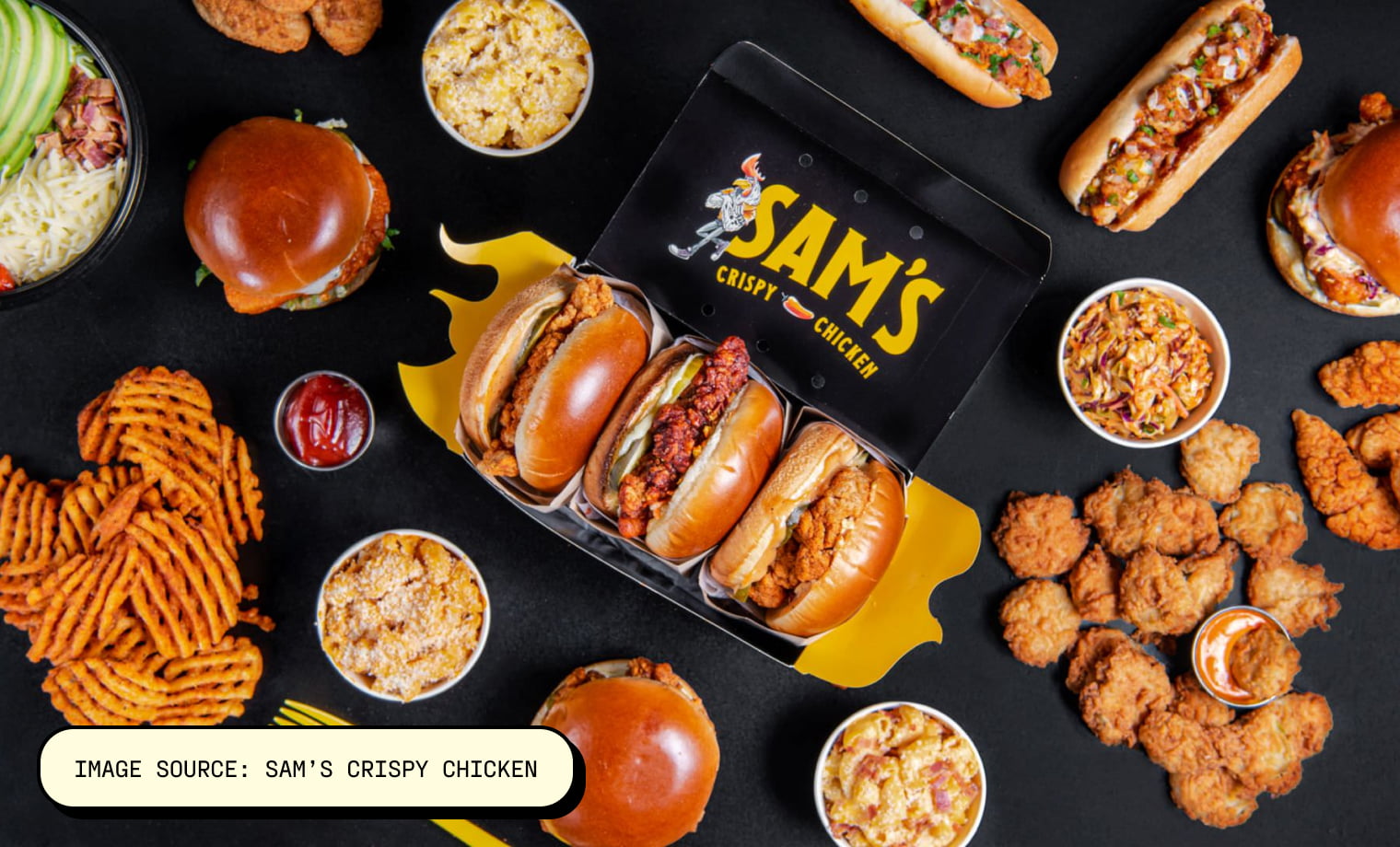
It’s Just Wings operates out of 1,050 Chili’s and Maggiano’s locations and is available for pick-up and delivery. It’s Just Wings recently made headlines for announcing that it partnered with 125 college football stars to help promote the restaurant at college campuses.
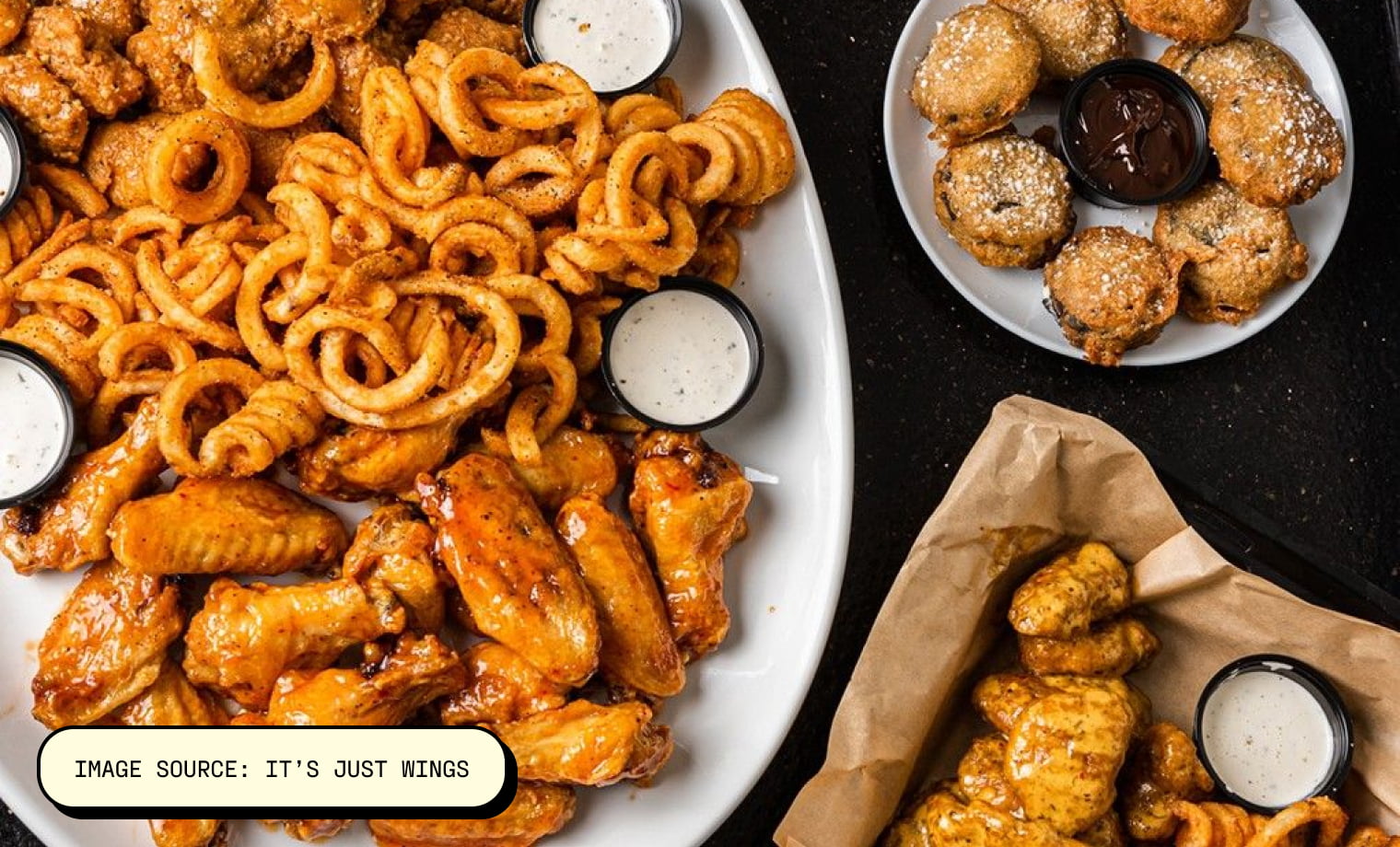
Ghost kitchens are a totally new concept — so it makes sense that there are a lot of ifs, ands, and buts about this new type of restaurant.
No, ghost kitchens are not illegal. Ghost kitchen operators must have a corporate formation (LLC or similar) and the permits and licenses you need to operate a restaurant. All health standards and codes that a city’s health and planning department holds to traditional restaurants are also applicable to ghost kitchens. Many ghost kitchens handle permits and code management on behalf of virtual restaurants as part of the agreement and fees for leasing the ghost kitchen space.
Ghost kitchens lack a customer-facing brick-and-mortar restaurant, which makes them somewhat ‘invisible’ compared to traditional restaurants. Hence, the term ‘ghost’ came about. There’s nothing spooky about ghost kitchens, unless you’re frightened by super-fast delivery speeds.
Ghost kitchens can start up for as little as $20,000, according to CBRE. This is very low compared to traditional restaurants, which usually cost millions of dollars to build, open, and operate. The cost of running a ghost kitchen depends on a lot, like whether you’re using a multi-operator ghost kitchen or a single operation. Depending on that choice, you’re paying for rent, labor, and operating costs. The type of food you sell also matters, of course. Sushi is more expensive than cheese fries.
Check Out This Guide:
GHOST KITCHEN COMPARISON TOOL: CHOOSE THE RIGHT PROVIDER FOR YOUR VIRTUAL RESTAURANT
Ghost kitchens must rely solely on advertising and food quality to survive. There is no restaurant experience to help ‘sell’ the food to customers. Ghost kitchens must have top-notch photography, advertising, and digital presence. Another major challenge of virtual-only kitchens is the high cost of labor. Some ghost kitchen operators like Kitchen United offer labor as part of their package to restaurants, which comes at a higher price-point but is a bit easier for operators who want to hand off everything to a third party.
The COVID-19 pandemic has supercharged demand for Ghost Kitchens. The Ghost Kitchen market share of total restaurant sales in the U.S. is expected to reach 21% within the next four years.
Ghost kitchens are a great alternative to brick-and-mortar restaurants, especially as we move into a digital age where consumers are on-the-go and tend to favor takeout and delivery over in-person dining.
Interested in learning more about how Lunchbox can help simplify your Ghost Kitchen operations?
ENTER YOUR EMAIL TO STAY IN THE KNOW!